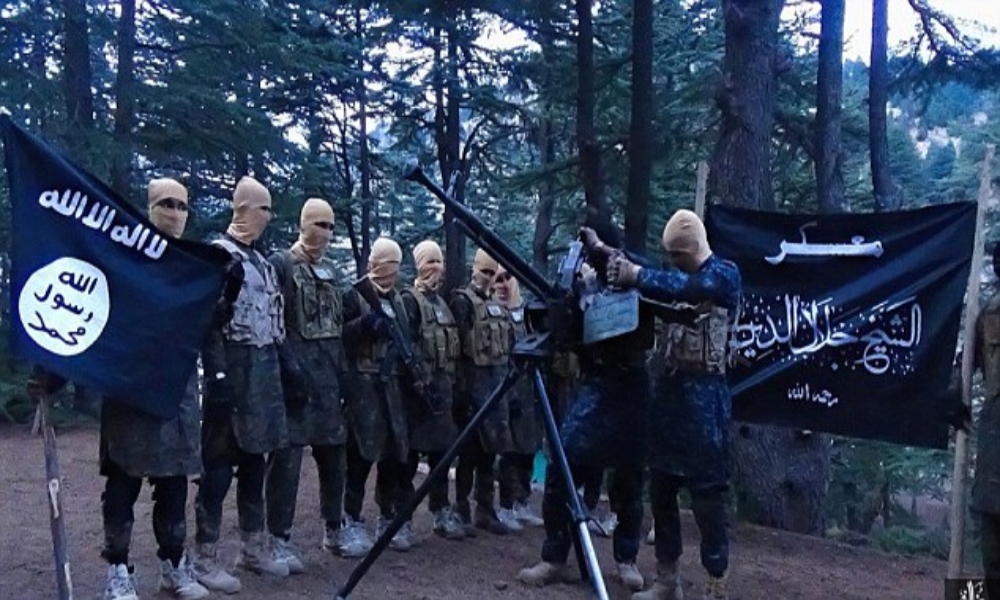IN THE MEDIA
How Afghanistan’s fall to the Taliban increases the global terrorism threat
September 6, 2021 | Oved Lobel

The Strategist – 6 September 2021
The bomb blast outside Kabul’s airport made 26 August the deadliest day for the US in Afghanistan for a decade. An Islamic State Khorasan (IS-K) suicide bomber killed an estimated 170 Afghans and 13 US soldiers—more American troops than were killed in action each year between 2015 and 2018.
Though IS-K has conducted several mass-casualty atrocities over the years, attacks on this scale will likely become more common with the US withdrawal, and an IS-K unchecked by a US military and intelligence presence may quickly begin to pose a global threat.
Joe Biden’s administration, like Donald Trump’s before it, has been gambling on a partnership with the Taliban for counterterrorism operations against IS-K, something that was likely raised when CIA director William Burns met with the Taliban’s putative leader, Abdul Ghani Baradar, in Afghanistan on 23 August. For some time, the US air force has ‘deconflicted’ with the Taliban to help fight IS-K, upgrading these efforts to include direct strikes in support of the Taliban in 2019 and 2020.
The Taliban recently appointed members of their most dangerous, al-Qaeda-intertwined component, the Haqqani network, to take the lead in Kabul, making clear that transnational jihad is still a core part of their agenda. The 26 August attack and subsequent 30 August rocket attack should end the delusion that the Taliban can be an effective counterterrorism partner, a notion that never made sense given that al-Qaeda is functionally the Taliban’s foreign operations arm.
In addition to reabsorbing thousands of prisoners released by the Taliban, IS-K has had several months without counterterrorism pressure to rebuild its already extensive networks. Meanwhile, the Taliban’s capture of the entire Afghan security forces arsenal makes it the best-armed jihadist group in history, dwarfing even the rise of the Islamic State terror group in 2014.
IS-K, however, has infiltrated the ranks of the Taliban and its allies. So, regardless of where one draws the line between genuine defection and infiltration, or who comes out on top in the endlessly fracturing and reconstituting terrorist milieu in Afghanistan, the primary losers will be Afghans, the region and the rest of the world.
The US surrender to the Taliban is already inspiring every jihadist group and sympathiser across the world. Once again, from their perspective, a superpower has thrown up its hands in the face of unwavering jihad in Afghanistan. This will supercharge activity and likely provide a safe haven for decades to come for those plotting and training.
The Taliban are only one component of an integrated jihadist network controlled by figures in Pakistan’s military and its Inter-Services Intelligence agency (ISI), and Afghanistan is only one front in the broader ISI-led regional jihad. Already in the 1990s, elements of this network were being trained in Afghanistan and then dispatched to Kashmir and deeper into India in an ever-escalating terrorist campaign. Because this is a single network that shifts resources to various fronts in the jihad, some of these fighters were sent back to Afghanistan to aid the initial Taliban conquest.
With Afghanistan likely to once again serve as an ISI terrorist camp, there’s little doubt that the jihadist network will be fed back into Kashmir and India, but this time armed with US weapons captured by the Taliban. Unlike with the training camps in Kashmir, India will be unable to target the terror camps in Afghanistan.
Even as it turns its eyes to India, the ISI may also use this jihadist network against the Pakistani state, which it has been trying to transform into a version of the Taliban’s ‘Islamic emirate’ since the early 2000s via its Tehrik-i-Taliban Pakistan (TTP), or Pakistani Taliban, component. Thousands of TTP prisoners have been released by the Taliban as potential foot soldiers in this ISI-linked effort to reignite the jihad against the Pakistani state. That could destabilise a country of over 200 million people and threaten the country’s control over its nuclear weapons. Often mischaracterised as ‘blowback’ from the ISI’s support for al-Qaeda and the Taliban, the TTP jihad against Pakistan is a core component of the ISI’s regional endeavours.
Pakistan has been a virtual client regime of the Chinese Communist Party for several decades. Islamabad’s victories, including in Afghanistan, are very much those of the CCP, even if the Biden administration believes otherwise.
The CCP is reportedly harbouring, training and arming anti-India insurgent groups via Myanmar. It has also escalated direct attacks on India since 2020, forcing India to deploy at least 50,000 troops to its northern border as the CCP massively expands its military infrastructure.
Pakistan refocusing its attention on India and pouring new insurgents and upgraded weaponry across the border will lead to a surrounded, distracted India incapable of focusing on the Quadrilateral Security Dialogue and broader efforts to counter CCP activity in the Indo-Pacific.
Moreover, Washington’s European allies, already upset by the US disregarding their interests and its haphazard, unilateral decision-making, now face a potential new refugee crisis. A Western coalition hampered by the political fallout of such a crisis and wary of US decision-making in general will be less able to effectively push back against expanding CCP influence.
Since 2011, the US has pursued its ‘pivot to Asia’ by attempting to disengage from the Middle East and Afghanistan and refocus on competition with China. Every attempt has been short-circuited by the rapid rise of a jihadist group, a pattern likely to continue with the Taliban’s victory and the resurgence of IS-K. The net result of the withdrawal from Afghanistan, including a potential hostage crisis as the US attempts to extract more than 100 American citizens stranded in the country, will leave the US less, not more, focused on confronting China’s hegemonic impulses.
Biden may think he’s succeeded where his two predecessors failed, but the consequences of the Afghanistan withdrawal will not stay contained for long. The same administration that estimated Kabul wouldn’t fall to the Taliban this year is now claiming that neither IS-K nor al-Qaeda will pose a global threat anytime soon despite the US withdrawal. They are almost certainly incorrect.





